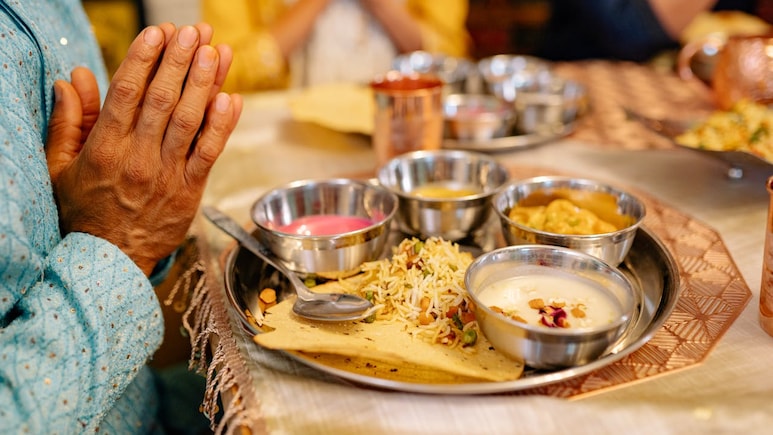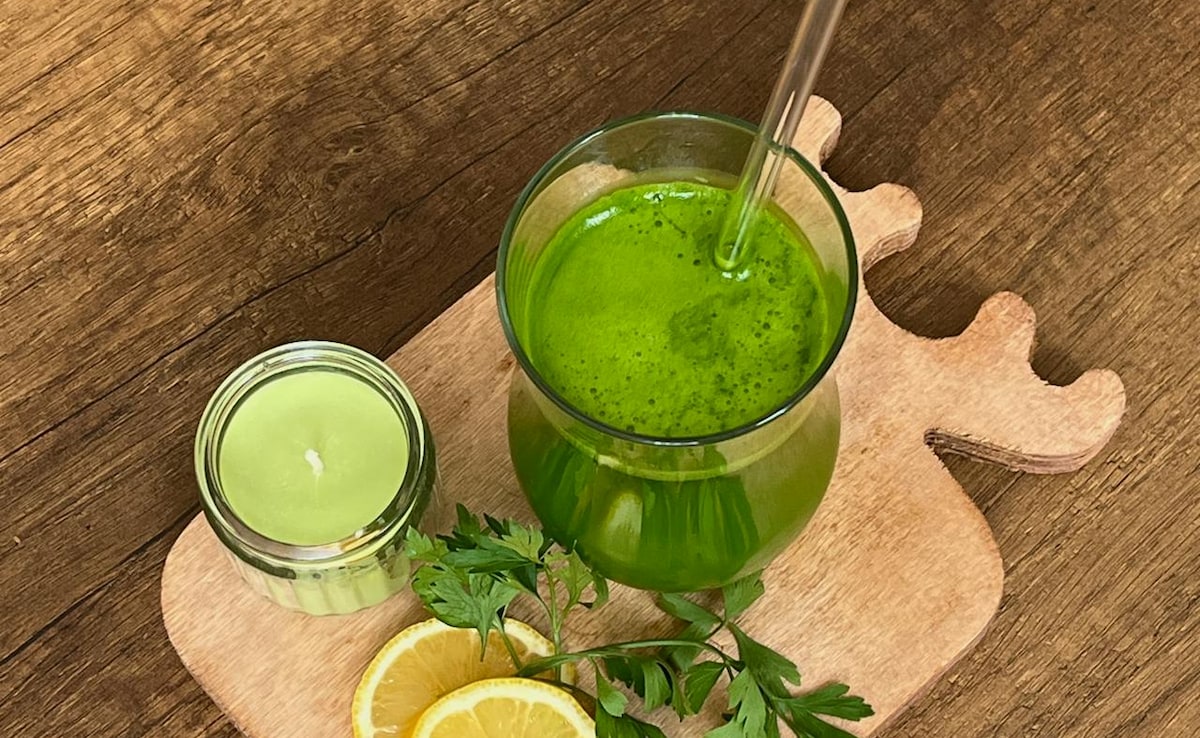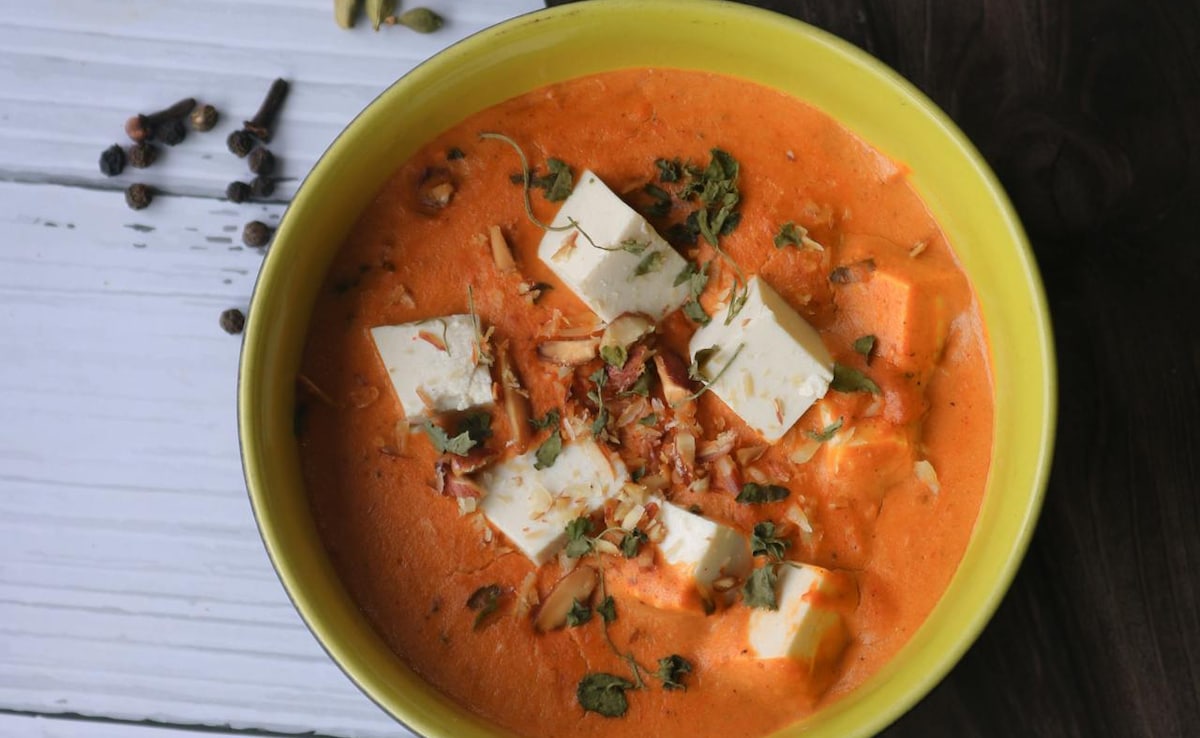
Every year, as Navratri arrives, millions across India take up fasting as both a spiritual and healthful practice. Traditionally, the nine-day festival is observed with sattvic foods, simple, pure and light meals meant to detoxify the body, support digestion and sharpen mental clarity. Ayurveda sees this as a seasonal reset. By lightening the diet during Ritu Sandhi (seasonal transition), the digestive system gets much-needed rest while the body eliminates toxins (ama). But in recent years, Navratri fasting has increasingly drifted from its sattvic roots. What was meant to be cleansing and calming is often turned into a calorie-heavy indulgence, with deep-fried snacks, sugary sweets and processed fasting foods dominating the plate.
The irony? Even when sattvic ingredients like sabudana (tapioca), kuttu atta (buckwheat flour), or singhara atta (water chestnut flour) are used, the way they're cooked and consumed often strips them of their benefits. "A sattvic ingredient doesn't guarantee a sattvic effect," warns says Dr Tanu Singh, an expert in women's health and Ayurvedic nutrition, and the co-founder of Lifeyoga. "It is the cooking method, portion size, and food combinations that determine whether fasting supports detoxification, or ends up burdening the body."
Let's explore the most common mistakes people make during Navratri fasting, why they go against the essence of sattvic eating, and what healthier corrections can bring the festival back to its true purpose of lightness, balance and renewal.
1. Turning Sattvic Ingredients Into Heavy Foods
Many fasting staples are naturally sattvic and easy to digest, like sabudana, kuttu flour, potatoes, and nuts. The problem arises when they are deep-fried into pakoras, pooris or vadas.
"Sabudana khichdi cooked lightly with cumin, rock salt and minimal ghee is sattvic. But the same sabudana deep-fried into vadas becomes heavy, oily and Kapha-aggravating," says Dr. Singh.
Deep frying not only increases the fat load but also blocks the detoxification process fasting is meant to support. Instead, opt for steaming, boiling, roasting or light sautéing with minimal ghee. These methods preserve the sattvic nature of the food while making it easy for Agni (digestive fire) to process.
2. Overeating In The Name Of Fasting
Just because the food is sattvic does not mean it should be eaten without limits. Ayurveda emphasizes Matrashitiya, mindful portion control. "Even sattvic food in excess weakens digestion, produces ama (toxins) and burdens vital organs like the liver and pancreas," explains Dr. Singh.
Ayurvedic texts recommend filling half the stomach with solid food, a quarter with liquids, and leaving a quarter empty for air and movement. Eating slowly, chewing thoroughly and stopping before one feels full keeps digestion smooth. During fasting, small, frequent meals are preferable to heavy feasts.
3. Potatoes And Fried Snacks As The Main Meal
Potatoes and fried chips may feel like Navratri staples, but over-reliance on them is harmful. They are calorie-dense, low in fibre and can spike blood sugar. "When potatoes and fried snacks dominate meals, they increase Kapha, slow digestion and often leave people bloated or lethargic," warns Dr. Singh.
Safer swaps include roasted sweet potato, pumpkin, bottle gourd, or steamed arbi. For variety, include light grains like barnyard millet (samak ke chawal), singhara atta or kuttu atta, and round it out with fruits, nuts and seeds. These provide sustained energy without overloading the stomach.

Photo Credit: Pexels
4. Excess Sugar And Salt
Sattvic foods are meant to calm the mind and body. But excessive sugar and salt shift them toward rajasic (overstimulating) or tamasic (dulling) qualities. "Too much sugar causes blood sugar spikes, lethargy and mood swings. Excess salt leads to bloating, hypertension and water retention," says Dr. Singh.
Instead, use natural sweeteners like dates, raisins, figs or a little jaggery. For salt, sendha namak (rock salt) is preferred in Ayurveda for being lighter and easier on digestion. Herbs and mild spices, like cumin, fennel, cardamom, or lemon juice, add flavour while aiding digestion.
5. Believing All Sattvic Foods Are Automatically Healthy
Ayurveda reminds us that it's not just what you eat, but how it's prepared and combined. "Even sattvic ingredients can turn unhealthy if deep fried, combined poorly, or eaten in heavy amounts," Dr. Singh points out.
For instance, mixing sabudana, potato and fried snacks in one thali creates a digestive overload. Wrong food combinations (Viruddha Ahara) can cause acidity, gas or indigestion, even if all ingredients are sattvic individually. Keeping meals simple, with one grain base and one light vegetable, is ideal.
6. Reliance On Packaged Fasting Foods
Ready-to-eat fasting chips, processed flours and packaged snacks are widely sold during Navratri. But Ayurveda views them as tamasic because they are stale, heavy and low in life force (prana). "Processed foods often contain preservatives, excess salt and oil. They disturb digestion, generate ama (toxins) and weaken immunity," cautions Dr. Singh.
Freshly prepared meals like sabudana khichdi, kuttu rotis, or boiled sweet potato retain vitality, balance the doshas, and energize the mind, which processed foods simply cannot.
7. Neglecting Hydration
Food often gets the spotlight during fasting, but hydration is equally important. Dehydration weakens Agni, causing constipation, fatigue and poor concentration. "Many replace hydration with stimulants like tea or coffee, or drink icy water that weakens digestion. These are common mistakes," says Dr. Singh.
Instead, sip warm water, herbal teas with cumin or fennel, coconut water, or buttermilk throughout the day. These not only hydrate but also balance doshas and aid detoxification.
8. Overusing Spices Or Seasonings
Sattvic cooking avoids strong spices like garlic, onion or chili, which overstimulate the senses. But some mild spices are beneficial if used sparingly. Cumin aids digestion, fennel cools Pitta, coriander detoxifies, and cardamom refreshes. Ginger tea kindles Agni.
"The mistake is over-seasoning, which pushes sattvic food toward rajasic. Keep seasoning light and mindful," advises Dr. Singh.

Photo Credit: Pexels
9. Mixing Too Many Heavy Foods In One Meal
Combining starchy foods like potato, sabudana and fried pakoras in one sitting overwhelms digestion. Instead of lightness, the body feels heavy, sleepy and bloated. "Agni can only handle so much heaviness. Simple meals digest smoothly, while excess starch and oil create ama and lethargy," Dr. Singh emphasizes.
Opt for one starch base (like sabudana or kuttu) with a light vegetable and mild spice. This keeps meals easy on the stomach while sustaining energy.
10. Misunderstanding The Essence Of Fasting
Perhaps the biggest mistake is treating Navratri fasting as an excuse for indulgence rather than a practice of simplicity. "Fasting is not about feasting. It is about resting digestion, calming the mind and supporting spiritual focus," says Dr. Singh.
When the table overflows with fried snacks and sweets, the essence of sattvic fasting in terms of clarity, detoxification and balance, is lost.
Navratri fasting is not meant to leave you heavy, bloated or fatigued. It is a seasonal reset that uses sattvic foods to cleanse the body and mind. But when fried snacks, packaged foods, excess sugar or wrong combinations take over, the sattvic diet loses its essence.
By cooking lightly, eating mindfully, hydrating well, and keeping meals simple and fresh, fasting can truly serve its Ayurvedic purpose. As Dr. Singh sums it up: "Purity lies not just in the ingredients but in the method and mindfulness of preparation. That is what makes a sattvic diet truly sattvic."
This Navratri, let your fasting bring balance, clarity and renewal, not toxins and lethargy.
Disclaimer: This content including advice provides generic information only. It is in no way a substitute for a qualified medical opinion. Always consult a specialist or your own doctor for more information. NDTV does not claim responsibility for this information.
Track Latest News Live on NDTV.com and get news updates from India and around the world

